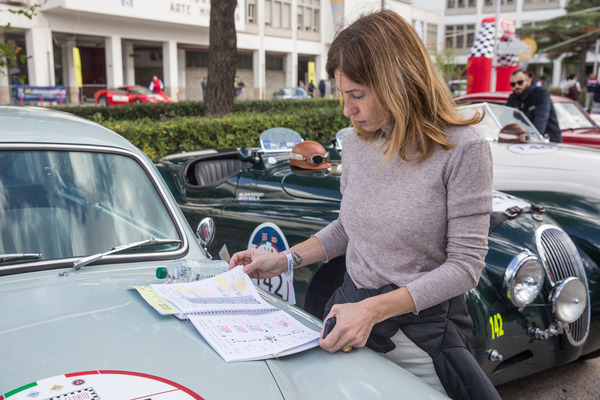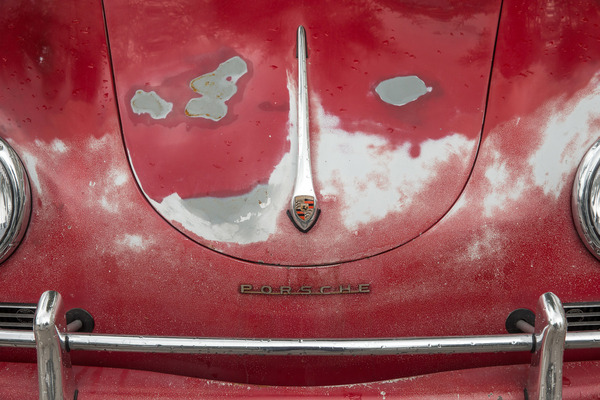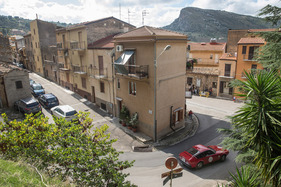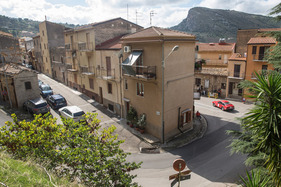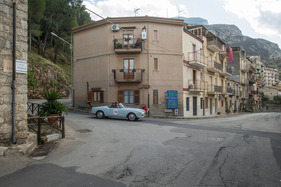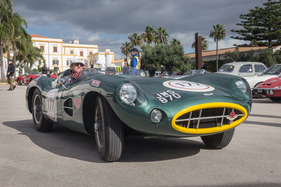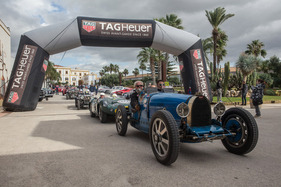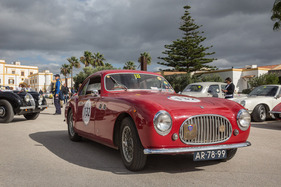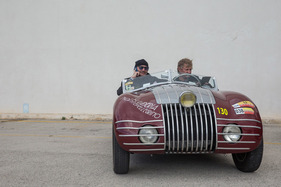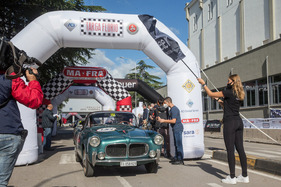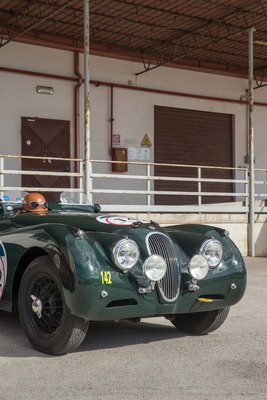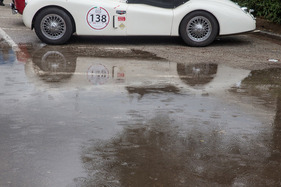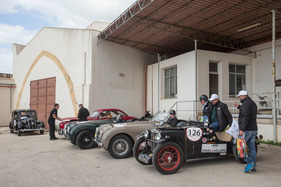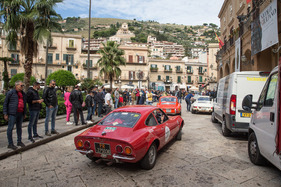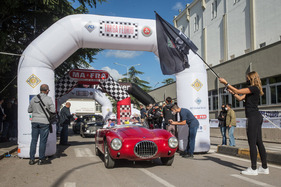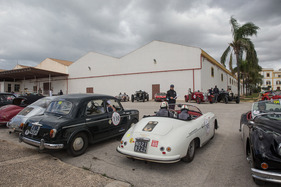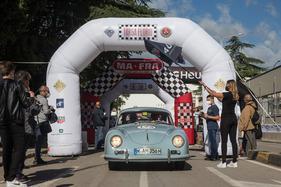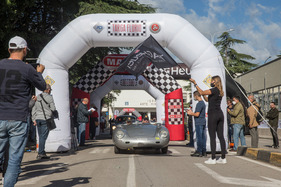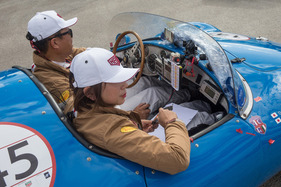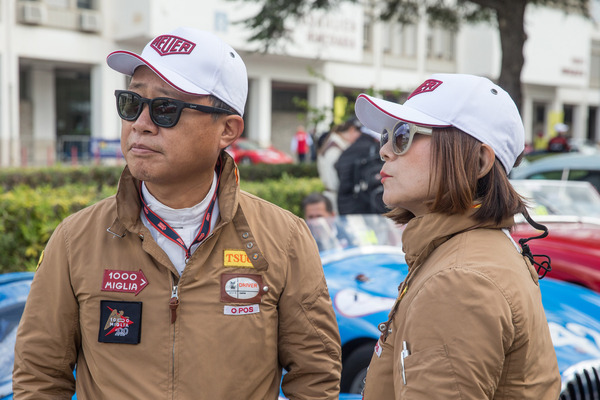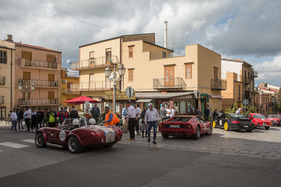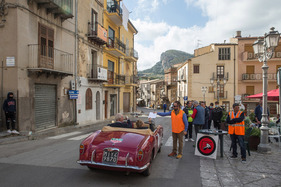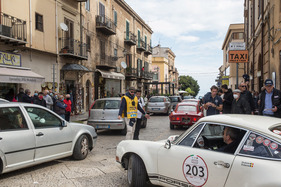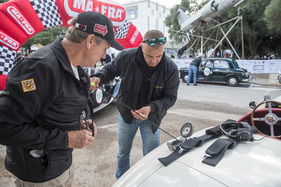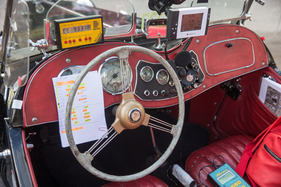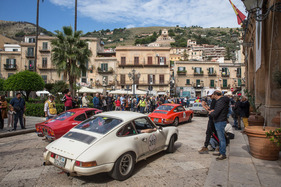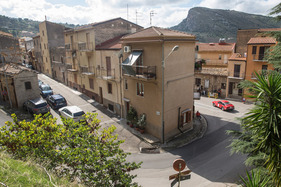The screech of the eight-cylinder engine of Nino Vaccarella's Alfa Romeo 33 is reflected back at the spectators from the high retaining walls and rows of houses in Collesano. They are standing in dense crowds at the unsecured roadside, always trying to touch the racing car reverently as it whizzes past. The chants of "Nino, Nino, Nino!" are completely drowned out by the noise - but they continue to shout at the top of their voices.

The Targa Florio - the legendary road race in Sicily. Between 1906 and 1977, it was the most important racing event on the island. The races in Syracusa and Enna were always overshadowed by the "big Targa".
It often counted as a race for the one-make world championship or the long-distance world championship. Champions such as Ugo Sivocci, Achille Varzi, Tazio Nuvolari and Clemente Biondetti in the pre-war period, then Stirling Moss, Wolfgang Graf Berghe von Trips, Joakim Bonnier and the Swiss drivers Jo Siffert (1970) and Herbert Müller (1966 and 1973) left their mark on this race from the 1950s onwards.
The "flying" professor
With Nino Vaccarella, there was a Sicilian driver who outshone everything, was the only one to win three times and is considered immortal for a true Sicilian, although he died a month ago at the age of 88. In an interview years ago, Vaccarella characterized himself as follows: "First and foremost, I am Sicilian, secondly, I am the principal of a grammar school in Palermo and only thirdly, I am a racing driver".

This did not prevent the professor from entering his name in the winners' lists of the 24 Hours of Le Mans (1964), the 1000 kilometers of the Nürburgring (1964) and the 12 Hours of Sebring (1970). But everything is topped by the three victories at the Targa Florio in 1965 (Ferrari), 1971 and 1975 (Alfa Romeo). "Actually, I should have won this race at least five or even six times - only bad luck and technical defects prevented me from doing so," he once explained.
Ferrari, Alfa Romeo and Porsche
On the 72-kilometre track (1951 to 1977), the most spectacular cars of the ilk of a Ferrari 275P2, Ferrari 512 S, Ferrari 312 PB, Porsche 910, Porsche 908/3 or Alfa Romeo 33 had dashed through the narrow streets of the villages of Cerda, Caltavutura or Collesano.
The official lap record has been held since 1972 by the "Austrian Doctor", as he is known - meaning Helmut Marko, who still works as racing director for Red Bull today. He drove his Alfa Romeo 33 through the 900 or so corners in a time of 33:41 minutes, which equates to an average speed of 128.253 km/h.
Leo Kinnunen had been five seconds faster in his Porsche 908/3 in training the year before, which was "only" good enough for the unofficial lap record.

There was only one opportunity to "rest" on the highly demanding circuit: the six-kilometer Buonfornello straight. "Of course, it was full throttle there too, but you could still relax a bit," said Vaccarella, describing the hellish ride in the Ferrari 512 at over 300 km/h, and continued: "I regularly had bloody hands after the race in the Ferrari."
And Vaccarella mentioned something else: "There were only a handful of drivers who could memorize the race track: Siffert, Rodriguez, Kinnunen, Marko and Elford and the Italian asphalt cowboy Arturo Merzario. Regazzoni, Ickx and Bell had a hard time, not to mention the Formula 1 world champions Fangio, Surtees and Hill."
Looking back
Against this backdrop, the Targa Florio Storico (Classica) for classic cars has been held for several years. No longer in May like the original race, but in the second half of October, from October 14 to 17 in 2021. The ideal way to extend the summer into the fall this year and forget about the rainy June and July.
Around 120 teams took on the hardships of competing with their classic cars in southern Palermo.
The journey was often on the road, at best by ship from Genoa to Sicily and for some privileged people by plane, whose cars were transported to the island by truck from Milan. The plan was for two days of historic rallying plus a small additional Sunday lap.
Impressive starting field
The spectrum of pre-war gems ranged from Bentley, Bugatti and Mercedes to Lagonda and BMW, garnished with all the sporting brands of the post-war era. Participants traveled from all over the world: USA, Japan, Mexico were represented as well as the most important European countries.
And with the Bentleys, a Bugatti, the BMW 328, the Mercedes-Benz SSK, the Alfa Romeo SZ and TZ, the Ferrari 275 GTB and a Porsche 911, some models with a glorious racing past were at the start.
Classic regularity rally
The Friday lap led from Palermo to the east of the island. Around 350 kilometers were garnished with 56 time trials. On Saturday, the middle of the "Madonie laps" - extended with additional kilometers - was driven.
50 special stages awaited the participants. On both days, there were also - not usual for Italy - section tests.
Little regard for tradition
The participants were at the start with a great deal of knowledge about the tradition of the Targa Florio and correspondingly high expectations. They were disappointed all along the line. The starting area with pits and grandstand in Cerda was only used once.

Despite the coronavirus pandemic, the numerous spectators were only able to catch a brief glimpse of the classic cars passing by.
The original "Small Madonie Course" was not passable. The middle course had to be used instead.
The road leading from Caltavuturo to Scillato had slipped down into the valley over a length of several kilometers, along with all the engineering structures and crash barriers. Instead of repairing it, the state has built a steep emergency road, but this has already been badly damaged again.
Poor road condition
The road condition of the entire Targa Florio Storico course was also a major source of annoyance for the participants. "It is unacceptable to drive our cars on roads like this. Unevenness and huge potholes caused cars to bend over the diagonal and a wheel to become stuck either in the air or in a deep pothole," said an annoyed participant.

There were also major organizational shortcomings. It is one thing for the organizer to try to boost his coffers by holding the "Ferrari Tribute Targa Florio". But the fact that the classic car participants are relegated to the status of extras and incidentals and treated as such is another.
On Sunday lunchtime, for example, the participants who had arrived punctually according to the program were told at 13:30 that the 88 teams of Ferraristi would be eating first and that they would have to be patient until 15:00 - without drinks, without seating on the grounds of the noble Villa Airoldi in Palermo. One participant aptly commented that this was the third time he had been here: The first, only and last time.
Except for expenses ...
The conclusion: the Targa Florio is not worth the (long) journey to Sicily. The original circuit in the Madonie receives too little attention. Choosing Palermo, with its dirt and garbage and horrible traffic chaos, as the start and finish point is, to put it mildly, suboptimal. If the Targa Florio Storico is to have a future, the organizers need to go over their books and improve. If Ferrari pulls out, the event will be dead - the costs of a rally cannot be recouped with just over 100 classic cars.
But at least one thing is certain: next year, the roads will be a year older and the condition will be even worse...
Results
1. Moceri / Dicembre (It), Fiat 508C, 303.02 points
2. Passanante / Moretti (It), Fiat 508C, 313.94
3. Accardo / Becchina (It), Fiat Ballila 508C, 362.94
4. Aliverti / Valente (It), BMW 328, 386.34
5. Sisti / Gualandi (IT), Lancia Aprilia, 626.09
6. Bisi / Cattivelli (It), Porsche 356 S90, 691.12
7. Diana / Bellante (It), Porsche 356S, 706.26
8. Magnoni / Vanoni (It), Porsche 356, 707.94
9. Mazzoleni / Gotti (It), Porsche Speedster, 712.92
10. Rossoni / Bernini (It), Fiat 1100, 776.55





